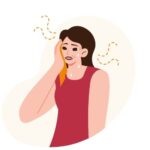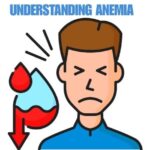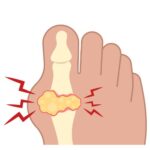The chronic and usually painful disorder known as endometriosis results from endometrial tissue—that which resembles the lining of the uterus—growing outside the uterus. Other difficulties, infertility, and extreme menstruation pain are among the several symptoms this can cause. For those impacted as well as their doctors, knowledge of endometriosis, its causes, symptoms, diagnosis, and treatment choices is absolutely vital.
What is Endometriosis?
Endometriosis occurs when endometrial-like tissue grows on the ovaries, fallopian tubes, the outer surface of the uterus, and other organs within the pelvis. In some cases, this tissue can also be found in areas beyond the pelvic region. Each month, the hormonal changes of the menstrual cycle cause this tissue to thicken, break down, and bleed, similar to the normal endometrial lining. However, because this tissue is located outside the uterus, it has no way to exit the body, leading to inflammation, pain, and the formation of scar tissue.
Key Features
- Chronic Pain: Many women with endometriosis experience significant pain, especially during menstruation.
- Infertility: Endometriosis is a leading cause of infertility, affecting up to 30-40% of women with the condition.
- Varied Symptoms: Symptoms can vary widely among individuals, with some experiencing severe issues and others having mild symptoms.
Symptoms of Endometriosis
The symptoms of endometriosis can differ significantly from person to person, and some may experience none at all. Common symptoms include:
- Pelvic Pain
- Description: The most common symptom, often associated with menstrual periods.
- Characteristics: Pain may be severe and debilitating, lasting for several days during menstruation. It can also occur at other times in the menstrual cycle.
- Menstrual Irregularities
- Description: Heavy periods (menorrhagia) or bleeding between periods can occur.
- Characteristics: Some individuals may notice an increase in blood flow during their menstrual cycle.
- Infertility
- Description: Many women with endometriosis struggle with infertility.
- Characteristics: Endometriosis can lead to scarring and adhesions that affect the reproductive organs.
- Pain During Intercourse
- Description: Pain during or after sexual intercourse is a common symptom.
- Characteristics: This discomfort may stem from the positioning of endometrial tissue.
- Pain with Bowel Movements or Urination
- Description: Some women experience pain during bowel movements or urination, particularly during menstruation.
- Characteristics: This may indicate that endometrial tissue has grown on the intestines or bladder.
- Other Symptoms
- Fatigue: Chronic fatigue is common among those with endometriosis.
- Gastrointestinal Issues: Symptoms may include diarrhea, constipation, bloating, or nausea, particularly during menstrual periods.
- Back Pain: Chronic lower back pain can occur, particularly during menstruation.
Causes and Risk Factors
Causes
The exact cause of endometriosis remains unclear, but several theories exist:
- Retrograde Menstruation: This theory suggests that menstrual blood flows backward through the fallopian tubes into the pelvic cavity instead of leaving the body.
- Embryonic Cell Transformation: Hormones such as estrogen might transform embryonic cells into endometrial-like cell implants during puberty.
- Immune System Disorders: A compromised immune system may fail to recognize endometrial-like tissue growing outside the uterus, allowing it to thrive.
- Genetic Factors: A family history of endometriosis may increase the risk of developing the condition, suggesting a genetic predisposition.
Risk Factors
Several factors may increase the likelihood of developing endometriosis:
- Age: Endometriosis is most commonly diagnosed in women in their 30s and 40s, though it can affect individuals of any age.
- Family History: Women with close relatives (mother, sister) who have endometriosis are at higher risk.
- Menstrual Cycle Characteristics: Early onset of menstruation, short menstrual cycles, and heavy bleeding can increase the risk.
- Anatomical Differences: Abnormalities in the reproductive system, such as a uterus with an abnormal shape, can contribute to the development of endometriosis.
- Low Body Mass Index (BMI): Some studies suggest that women with a low BMI may have a higher risk of developing endometriosis.
Diagnosis of Endometriosis
Diagnosing endometriosis can be challenging due to the variability of symptoms and overlap with other conditions. The following steps are commonly involved in the diagnostic process:
- Medical History and Symptom Review
- A thorough review of symptoms, menstrual cycle history, and any family history of endometriosis is essential.
- Physical Examination
- A pelvic exam may be performed to check for cysts or scarring behind the uterus. However, this method may not always detect endometriosis.
- Imaging Tests
- Ultrasound: A pelvic ultrasound can help identify cysts associated with endometriosis, though it may not reveal small implants.
- Magnetic Resonance Imaging (MRI): An MRI can provide detailed images of the reproductive organs and help in the diagnosis.
- Laparoscopy
- Description: A minimally invasive surgical procedure in which a camera is inserted into the pelvic cavity to visualize and possibly biopsy endometrial tissue.
- Significance: This is considered the gold standard for diagnosing endometriosis, allowing for direct observation of endometrial lesions.
Management and Treatment
While there is no cure for endometriosis, various treatment options are available to manage symptoms and improve quality of life. Treatment plans are often individualized based on the severity of the condition and personal preferences.
1. Medications
- Pain Relief: Nonsteroidal anti-inflammatory drugs (NSAIDs) like ibuprofen can help alleviate pain.
- Hormonal Therapy: Hormonal treatments can help reduce or eliminate menstruation, thereby slowing the growth of endometrial tissue. Options include:
- Birth Control Pills: Hormonal contraceptives can help regulate or reduce menstrual flow.
- Progestin Therapy: Progestin-only pills, injections, or IUDs can help shrink endometrial tissue.
- GnRH Agonists: These medications induce a temporary menopause-like state, reducing estrogen levels and alleviating symptoms.
2. Lifestyle Modifications
- Diet and Nutrition: Some individuals find relief by following anti-inflammatory diets rich in fruits, vegetables, whole grains, and healthy fats. Reducing processed foods, red meat, and sugar may also help.
- Exercise: Regular physical activity can help manage pain and improve overall health. Activities such as yoga or swimming can be beneficial.
3. Alternative Therapies
- Physical Therapy: Pelvic floor therapy can help strengthen muscles and alleviate pain.
- Acupuncture: Some women find relief from pain through acupuncture treatments.
- Mind-Body Techniques: Stress management techniques, such as meditation and mindfulness, can help cope with the emotional aspects of endometriosis.
4. Surgical Options
In cases where pain is severe or other treatments are ineffective, surgery may be recommended:
- Laparoscopic Surgery: This minimally invasive procedure can remove endometrial lesions, scar tissue, and adhesions.
- Hysterectomy: In severe cases, a hysterectomy (removal of the uterus) may be considered, particularly if the patient has completed childbearing.
Living with Endometriosis
Living with endometriosis requires a proactive approach to manage symptoms and maintain quality of life:
- Education: Understanding the condition can empower individuals to make informed decisions about their treatment options and advocate for themselves in healthcare settings.
- Support Systems: Connecting with support groups or online communities can provide emotional support and practical advice.
- Regular Medical Follow-ups: Continuous monitoring by a healthcare provider is essential for managing symptoms and adjusting treatment plans as needed.
- Mental Health: Seeking counseling or therapy can be beneficial in managing the psychological impact of living with a chronic condition.

Endometriosis is a complex and challenging condition that affects many individuals, significantly impacting their quality of life. By understanding the condition, recognizing symptoms, and exploring treatment options, those affected can take active steps toward managing their health. If you suspect you have endometriosis or are experiencing related symptoms, it is essential to consult a healthcare provider for an accurate diagnosis and a personalized treatment plan.







